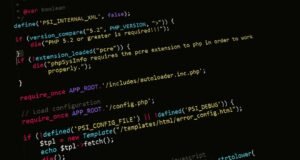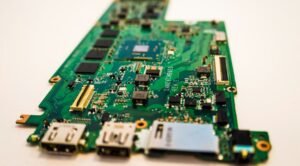Where Is Language Processed
Language processing is a complex cognitive task that involves several areas of the brain. Researchers have made significant progress in understanding where language is processed, and this article explores the main regions involved in this fascinating process.
Key Takeaways:
- Language processing involves multiple regions of the brain.
- The left hemisphere is the primary site for language processing in most individuals.
- Broca’s area and Wernicke’s area are two key regions involved in language production and comprehension, respectively.
In most individuals, language processing predominantly occurs in the left hemisphere of the brain. This lateralization of language is referred to as hemispheric specialization. The left hemisphere is dominant for language functions in about 95% of right-handed individuals and 70% of left-handed individuals.
*Interestingly*, the right hemisphere also contributes to language processing, especially in tasks related to prosody, intonation, and emotional aspects of language. However, the left hemisphere remains the primary site for core language functions such as grammar, syntax, and semantics.
Regions Involved in Language Processing
The brain regions primarily involved in language processing include Broca’s area, Wernicke’s area, and the arcuate fasciculus. These regions form the core language network responsible for language production and comprehension.
- Broca’s area: Located in the left frontal cortex, Broca’s area plays a crucial role in speech production and articulation. It is involved in the planning and coordination of the movements required for spoken language.
- Wernicke’s area: Situated in the left posterior superior temporal cortex, Wernicke’s area is responsible for language comprehension and semantic processing. Damage to this area can lead to Wernicke’s aphasia, a condition marked by fluent but nonsensical speech.
- Arcuate fasciculus: This fiber tract connects Broca’s area and Wernicke’s area, facilitating the flow of information between these two language regions.
Language Processed Across Modalities
Language processing is not limited to speaking and listening. It extends to different modalities, including reading and writing. More specialized regions of the brain become active when engaging in these language-related tasks.
- When reading, the visual word form area (VWFA) located in the left occipitotemporal cortex becomes active. It is involved in recognizing and processing written words.
- Writing involves the coordination of movements required for the fine motor control necessary to shape letters and words. Areas such as the premotor cortex and the supplementary motor area are involved in motor planning and execution needed for writing.
| Language Area | Function |
|---|---|
| Broca’s area | Speech production and articulation |
| Wernicke’s area | Language comprehension and semantic processing |
| Arcuate fasciculus | Connects Broca’s area and Wernicke’s area |
In summary, language processing primarily occurs in the left hemisphere of the brain, with key regions such as Broca’s area and Wernicke’s area playing crucial roles in language production and comprehension. Other areas become active during tasks like reading and writing. Understanding where language is processed provides valuable insights into the complexity of human communication.

Common Misconceptions
Language Processing Occurs Only in the Brain
One common misconception is that language processing only takes place in the brain. However, language is not solely processed within the confines of our brain; it also involves multiple sensory and motor systems.
- Language processing involves not only the brain but also the senses and muscles.
- Speech production relies on the coordination of vocal cords and muscles.
- Visual and auditory processing contribute to understanding spoken and written language.
Language Processing Occurs in a Specific Brain Region
Another common misconception is that language processing occurs in a single, specific region of the brain. While certain brain regions, such as Broca’s and Wernicke’s areas, are closely associated with language processing, language is a complex and distributed cognitive function that engages multiple brain areas.
- Language processing involves various areas of the brain, including the temporal, frontal, and parietal lobes.
- Different aspects of language, such as syntax and semantics, engage different brain networks.
- Damage to specific brain regions may result in language impairments, but other areas can compensate to some extent.
Language Processing Occurs in a Universal Manner
A common misconception is that language processing is universally the same across all individuals and cultures. However, language processing can vary based on factors such as native language, linguistic background, and cultural context.
- Language processing can be influenced by the grammatical rules and structures of different languages.
- Cultural differences can affect language processing, such as politeness norms and communication styles.
- Individuals with different linguistic backgrounds may employ distinct cognitive strategies for language processing.
Language Processing Occurs Only in Spoken or Written Form
People often assume that language processing solely occurs in spoken or written form. However, language is a multimodal phenomenon that involves both verbal and nonverbal components.
- Gestures and facial expressions play a crucial role in language comprehension and communication.
- Nonverbal cues help convey emotions, sarcasm, and other nuanced forms of communication.
- Sign languages are full-fledged languages that involve visual-manual processing instead of spoken or written forms.
Language Processing Is Solely a Human Ability
Lastly, a common misconception is that language processing is an exclusive domain of humans. While human language is undoubtedly unique, animals also exhibit forms of communication and language-like behaviors.
- Animals such as dolphins, apes, and birds demonstrate complex vocalizations and communication systems.
- Animals have been observed to have syntax-like structures in their calls and gestures.
- Research continues to explore the cognitive and neural basis of animal communication and its similarities to human language processing.

Introduction
In the world of neuroscience and cognitive psychology, the question of where language is processed in the brain has been a matter of great interest and research. Through various studies and advancements in brain imaging techniques, scientists have gained insights into the intricate processes involved in language comprehension and production. This article presents ten captivating tables that shed light on the fascinating aspects of language processing.
Table 1: Language Areas in the Brain
This table showcases the different brain regions involved in language processing. From the Broca’s area responsible for speech production to the Wernicke’s area involved in language comprehension, each region serves a unique role in the language network.
| Brain Region | Function |
|---|---|
| Broca’s Area | Speech production |
| Wernicke’s Area | Language comprehension |
| Angular Gyrus | Reading comprehension |
Table 2: Language Lateralization
This table highlights the lateralization of language processing, showing which hemisphere of the brain is primarily responsible for different language functions.
| Language Function | Dominant Hemisphere |
|---|---|
| Speech production | Left Hemisphere |
| Language comprehension | Left Hemisphere |
| Prosody (intonation and rhythm) | Right Hemisphere |
Table 3: Aphasia Types
This table outlines different types of aphasia, a language disorder resulting from brain damage, and the corresponding language impairments.
| Aphasia Type | Language Impairments |
|---|---|
| Broca’s Aphasia | Impaired speech production |
| Wernicke’s Aphasia | Impaired language comprehension |
| Global Aphasia | Severe impairment in both production and comprehension |
Table 4: Brain Activation during Language Tasks
This table presents the brain regions that exhibit increased activity during various language tasks, as observed through neuroimaging techniques.
| Language Task | Activated Brain Regions |
|---|---|
| Reading | Visual cortex, angular gyrus |
| Speaking | Broca’s area, motor cortex |
| Listening | Wernicke’s area, auditory cortex |
Table 5: Neuroplasticity in Language Learning
This table focuses on neuroplasticity, the brain’s ability to reorganize itself in response to learning, and the impact it has on language acquisition.
| Age Group | Neuroplasticity and Language Learning |
|---|---|
| Children | High neuroplasticity; rapid language acquisition |
| Adults | Lower neuroplasticity; slower language acquisition |
Table 6: Language and Bilingualism
This table explores the advantages and challenges associated with bilingualism and its impact on language processing skills.
| Bilingualism | Effects on Language Processing |
|---|---|
| Enhanced cognitive control | Better executive function and attention |
| Code-switching | Fast switching between different languages |
| Language interference | Mixing languages and occasional lexical retrieval issues |
Table 7: Language Processing and Gestures
This table demonstrates the fascinating relationship between language processing and gestures, which contribute to communication and language comprehension.
| Gesture Type | Language Processing Role |
|---|---|
| Emblematic gestures | Directly substitute a word or phrase |
| Iconic gestures | Depict vivid imagery or actions |
| Beat gestures | Accentuate or emphasize speech |
Table 8: Evolutionary Origins of Language
This table offers insights into the evolutionary origins of language by comparing the communication systems of humans and other animals.
| Animals | Communication System |
|---|---|
| Humans | Complex spoken and written language |
| Chimpanzees | Gesture-based communication |
| Bees | Dance communication |
Table 9: Language and Emotional Processing
This table explores the relationship between language processing and emotional experiences, highlighting the impact of language on emotions and vice versa.
| Language Aspect | Emotional Processing |
|---|---|
| Positive words | Increase in positive emotions |
| Negative words | Enhanced response to negative emotions |
Table 10: Language Processing Disorders
This table provides a glimpse into language processing disorders that affect individuals, emphasizing the impact on language abilities.
| Language Disorder | Language Impairments |
|---|---|
| Specific Language Impairment (SLI) | Difficulty with language acquisition and usage |
| Auditory Processing Disorder (APD) | Difficulties processing and interpreting auditory information along with language-related tasks |
| Dyslexia | Reading and writing difficulties, impacting language skills |
Conclusion
This collection of captivating tables provides a glimpse into the world of language processing, showcasing the brain regions involved, the impact of neuroplasticity and bilingualism, the relationships with gestures and emotions, the evolutionary aspects, and various language processing disorders. The complexity and richness of language processing shed light on the intricacies of human communication and cognition. By delving into these tables, we gain a deeper appreciation for the remarkable systems that drive our ability to articulate thoughts, understand others, and navigate the diverse world of language.
Frequently Asked Questions
Where Is Language Processed
Where is language processed in the brain?
Where is language processed in the brain?
What is Broca’s area?
What is Broca’s area?
What is Wernicke’s area?
What is Wernicke’s area?
Who discovered Broca’s and Wernicke’s areas?
Who discovered Broca’s and Wernicke’s areas?
Can language processing occur in the right hemisphere?
Can language processing occur in the right hemisphere?
How does the brain process spoken language?
How does the brain process spoken language?
How does the brain process written language?
How does the brain process written language?
What happens when the language areas of the brain are damaged?
What happens when the language areas of the brain are damaged?
Can language processing be affected by age?
Can language processing be affected by age?
Can language processing be improved?
Can language processing be improved?




